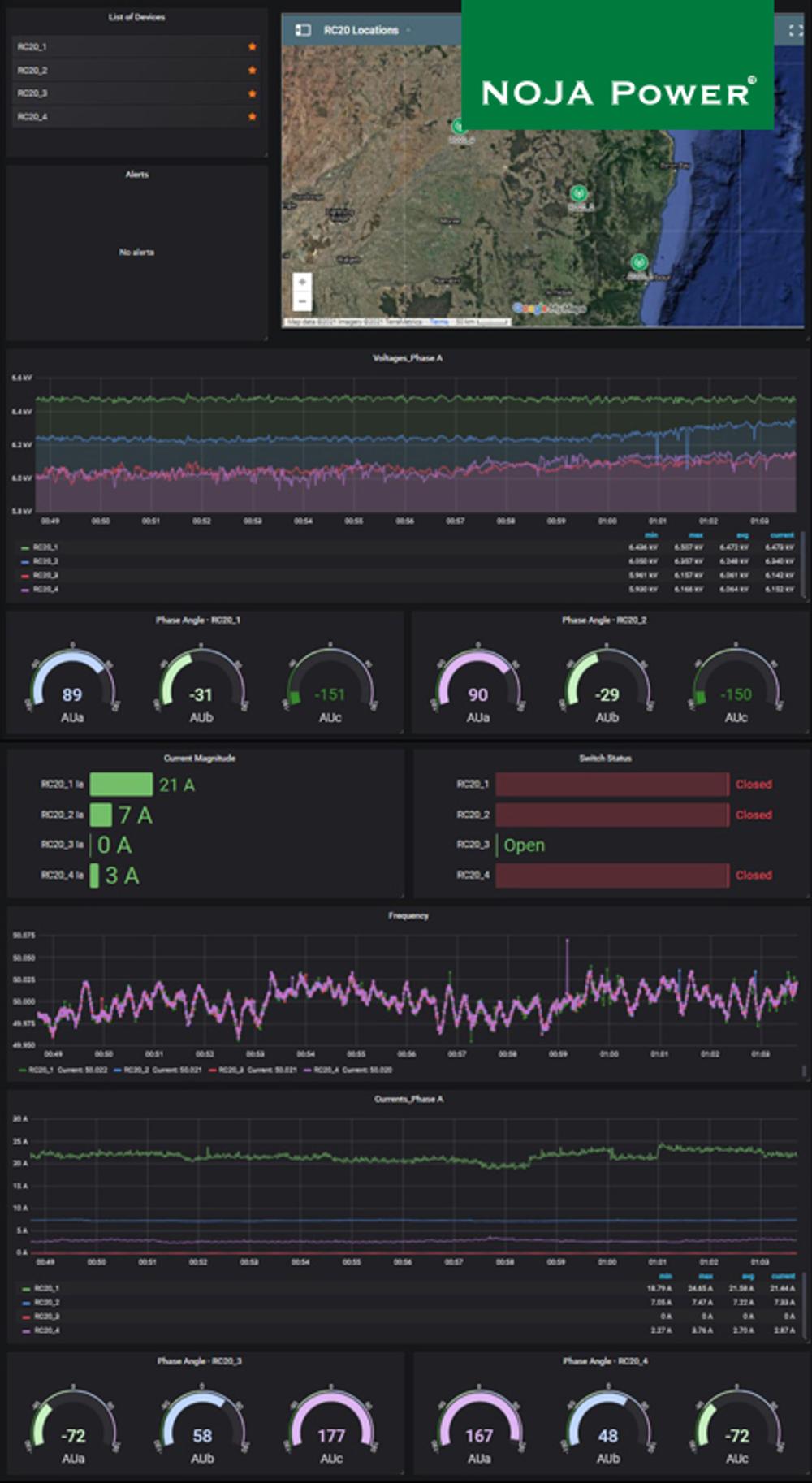Technical Article
Updated 12/2021
How to Choose your First Sites for Distribution Network Synchrophasors

Synchrophasors in Brief
Born in the 1990s, Synchrophasors are high precision measurements of network voltage and currents, timestamped with GPS clock precision.
This GPS timestamp allows Synchrophasor measurements across a network to be compared to check for issues and automate control.
In the past, this precision was only available with differential protection schemes, which were limited to a small area of comparison. With Synchrophasors, we can compare over vast distances and multiple nodes, because the time reference for all data capture is the same.
This is why Synchrophasors were initially deployed in transmission networks. Using Synchrophasors, engineers can implement wide area differential protection, along with a host of other applications.
Today, advances in computing and big data analysis allow us to apply this technology to the distribution grid. The gigabyte of data per day gathered at each Synchrophasor PMU can be readily managed, something unfeasible even five years ago.
The challenge is implementing the IT infrastructure to harvest and process this vast data. Fortunately, from the award-winning ARENA project in Australia, NOJA Power have commercialised a standard product for harvesting and managing this information, called NOJA Power Analytics.
Using their OSM Recloser system, NOJA Power implemented a PMU in their RC-20 Recloser Controller. This PMU can be connected to NOJA Power Analytics, allowing for cloud based Synchrophasor data gathering and analysis.
For users, all that is necessary is a communications link from the Recloser Controller, and a subscription to NOJA Power Analytics.

Benefits of Synchrophasors
Synchrophasors are captured at 50 samples per second in the RC-20, giving a high-resolution view of network voltages, currents, frequency, and Rate of Change of Frequency.
Fault analysis becomes far more rigorous with a comprehensive view of the distribution grid.
Renewable Energy and distributed generation becomes manageable with Synchrophasors, as the data stream can disaggregate load from generation at remote sites.
Power quality data becomes readily visible through Synchrophasors, capturing frequency, voltage, and harmonic excursions far above capabilities of existing SCADA systems.
This high-resolution data can also be used to derive network impedances, giving engineers actionable data to inform their network models. Improved network models improve protection systems design and network planning.
Synchrophasors have even been used for detecting partial discharge on the power lines. Ongoing research shows promise for equipment failure prediction.
The list of Synchrophasor benefits is growing, driven by active research in the field. For users looking to implement a Synchrophasor data capture program, the next logical question is “What are the optimum sites for Synchrophasor Data Capture?”
Selecting Sites
NOJA Power’s application of PMU’s allows engineers to leverage the voltage and current sensors in a NOJA Power OSM Recloser as a Medium Voltage measurement source for PMUs. Capturing PMU’s is as simple as installing an OSM Recloser with RC-20 controller at a desirable site, then implementing a communications link between the RC-20 and the NOJA Power Analytics data cloud. So, what makes a desirable site?
Problem Feeders
From field experience, utilities learn most from distribution Synchrophasors on problem feeders. Feeders with unreliable supply, old equipment, regular faults, or unusual network parameters represent the best opportunities for learning.
Synchrophasors are a high-resolution inspection of network parameters, and their precision allows for impedance calculations of the feeder. Utilities that install PMU’s (OSM Reclosers with RC-20 Control) at either end of these feeders can compare data to calculate impedances.
Furthermore, every fault presents an opportunity to characterise the network response. When this feeder has a fault, what are the effects on other connected feeders? What are the effects at the substation? What about network stability?
With Synchrophasor data capture, all these questions can be answered.
Distributed Generation Connections
Renewables and distributed generation are a major emergent challenge for engineers. Engineers are used to one-way power flow, but when the load and source are co-located, how can the network be controlled?
Synchrophasors allow for separation of generation and load values at distributed sites. Installing OSM Recloser PMU’s at distributed generation sites gives this vision on load and supply. Without this technology, it is highly challenging to understand the state of distributed generation.
Synchrophasors can also be used for Wide Area anti-islanding protection, solving sensitivity issues when distributed generation closely matches the load.
Next Steps
“The NOJA Power Analytics Cloud based Phasor Data Concentrator (PDC) allows our customers to take a step by step approach into Synchrophasors.” reports NOJA Power Group Managing Director Neil O’Sullivan.
“Customers can literally install one device on their network and connect it using a secure 4G VPN connection to a NOJA Power Analytics Cloud, and then have immediate access to the synchrophasor data streamed into that Cloud as well as Cloud based Analytic tools to analyse and download the data.”
Implementing a distribution Synchrophasor trial is now a commercially available standardised product. NOJA Power Analytics allows utilities and private infrastructure engineers to harvest Synchrophasor data from their OSM Reclosers with a simple subscription. Comprehensive network analysis and insights can be achieved using existing primary plant.
Want to stay up to date with Electrical Distribution Technology?
Join our list for a free weekly technical bulletin, as we share our Global Electrical Engineering experience directly to your inbox.
Subscribe →